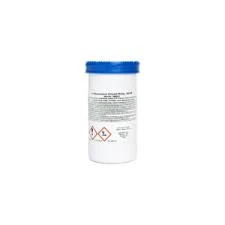polyacrylamide flocculant
The Role of Polyacrylamide Flocculants in Water Treatment
Polyacrylamide (PAM) flocculants are synthetic polymers that play a crucial role in water treatment processes. Due to their unique properties, they are widely used in various industries, including municipal water treatment, wastewater management, and even in the oil and mining sectors. This article delves into the significance of polyacrylamide flocculants, their applications, and the mechanisms by which they influence water quality.
Understanding Polyacrylamide Flocculants
Polyacrylamide is a long-chain polymer that can be produced in various forms, including anionic, cationic, and non-ionic types. The chemical structure of polyacrylamide allows it to interact effectively with suspended particles in water, leading to flocculation— the process by which particles aggregate into larger clusters or flocs, making them easier to remove from water.
The efficiency of PAM flocculants largely depends on their molecular weight, charge density, and concentration. Anionic polyacrylamide is effective for negatively charged particles, which are common in natural waters. Conversely, cationic polyacrylamide works well with positively charged particles and can help in the dewatering of sewage sludge. Non-ionic types are neutral and can be used in various applications where charge interactions are not crucial.
Applications of Polyacrylamide Flocculants
1. Municipal Water Treatment In drinking water treatment plants, polyacrylamide flocculants are used to remove suspended solids, colloids, and other impurities, ensuring that the water meets health standards. The flocculation process leads to the creation of larger aggregates that can be easily separated using sedimentation or filtration.
2. Wastewater Management PAM is instrumental in wastewater treatment, where it enhances the removal of pollutants and improves sludge dewatering. This is particularly important in industries with high volumes of wastewater, such as food processing and paper manufacturing, allowing for more efficient recycling of water and reduced environmental impact.
polyacrylamide flocculant

3. Mining and Oil Extraction In the extraction of minerals and oil, polyacrylamide flocculants help separate valuable materials from waste products. Their ability to clarify liquids and facilitate solid-liquid separation is vital in these resource-intensive processes.
4. Agriculture PAM is also used in agricultural applications to enhance soil structure and improve water retention, particularly in arid regions. When applied to soil, it helps reduce erosion and improves the efficiency of irrigation systems.
Mechanisms of Action
Polyacrylamide flocculants work through two main mechanisms charge neutralization and bridging. Charge neutralization occurs when the charged groups of the polymer interact with oppositely charged particles, reducing repulsion and facilitating aggregation. Bridging occurs when the long chains of the polymer attach to multiple particles, bringing them together into larger aggregates.
The effectiveness of PAM flocculants can be influenced by various factors, including pH, ionic strength, and the presence of other chemicals. Therefore, careful selection and optimization of the flocculant type and dosage are essential for achieving optimal water treatment outcomes.
Conclusion
Polyacrylamide flocculants are invaluable tools in water treatment, offering efficient solutions for removing contaminants and improving water quality across various sectors. Their unique properties, combined with their versatility, make them a key component in sustainable water management practices. As industries continue to seek ways to reduce their environmental footprint, the use of polyacrylamide flocculants is likely to grow, highlighting the importance of ongoing research and development in this field.
-
Understanding Polycarboxylic Acids: Properties, Applications, and Future PotentialNewsJul.28,2025
-
Scale Inhibitor Explained: How to Protect Your System from Limescale and Hard Water DamageNewsJul.28,2025
-
Scale and Corrosion Inhibitors: Essential Chemicals for Industrial Water System ProtectionNewsJul.28,2025
-
Polyaspartic Acid: A Biodegradable Polymer for Sustainable ChemistryNewsJul.28,2025
-
Isothiazolinones: A Versatile Antimicrobial Class with Industrial Power and Regulatory ChallengesNewsJul.28,2025
-
A Deep Dive into 2-Phosphonobutane-1,2,4-Tricarboxylic Acid (PBTC)NewsJul.28,2025





